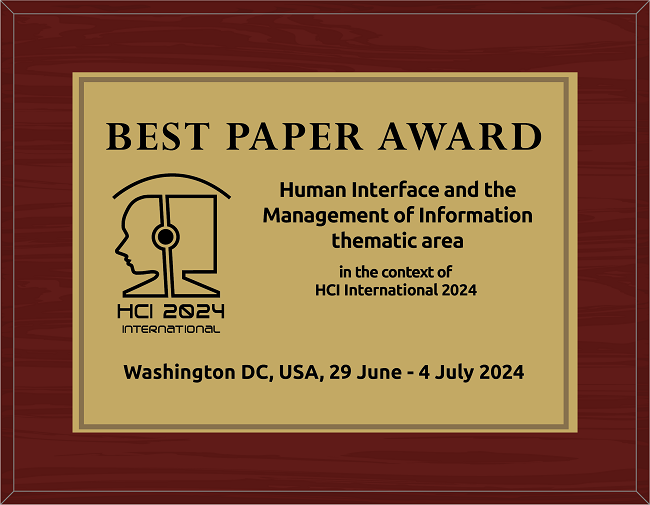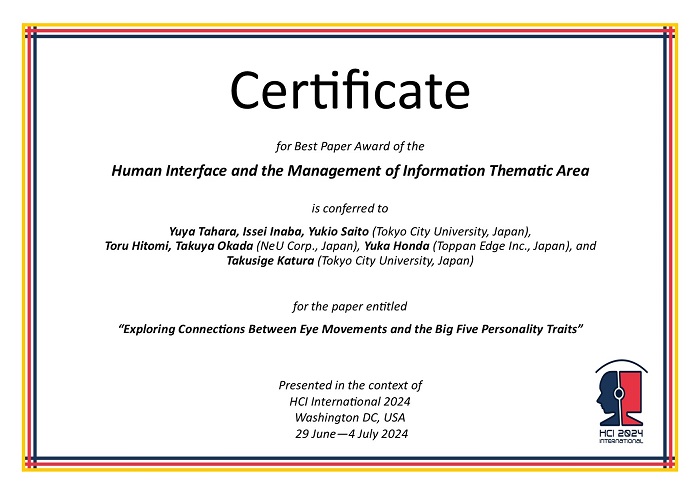
The Best Paper Award of the Human Interface and the Management of Information Thematic Area
has been conferred to
Yuya Tahara, Issei Inaba, Yukio Saito (Tokyo City University, Japan),
Toru Hitomi, Takuya Okada (NeU Corp., Japan), Yuka Honda (Toppan Edge Inc., Japan),
and Takusige Katura (Tokyo City University, Japan)
for the paper entitled
"Exploring Connections Between Eye Movements and the Big Five Personality Traits"

Yuya Tahara
(presenter)

Best Paper Award for the Human Interface and the Management of Information Thematic Area, in the context of HCI International 2024, Washington DC, USA, 29 June - 4 July 2024

Certificate for Best Paper Award of the Human Interface and the Management of Information Thematic Area presented in the context of HCI International 2024, Washington DC, USA, 29 June - 4 July 2024
Paper Abstract
"This study investigates the connection between eye movements, as captured through eye-tracking technology, and personality traits, specifically focusing on the Big Five personality model (Openness, Conscientiousness, Extraversion, Agreeableness, Neuroticism). Utilizing a diverse set of images with clear meanings, such as pictures of animals and landscapes, the research explores how individual personality traits influence visual attention patterns. Participants rated images based on personal preferences while their eye movements were recorded, aiming to correlate these movements with their personality traits. The analysis revealed relationships between certain personality traits and specific aspects of eye movement, such as fixation duration and gaze patterns, suggesting that personality influences how individuals visually engage with content. This has implications for neuromarketing, educational content tailoring, and enhancing user engagement through personalized visual experiences."
The full paper is available through SpringerLink, provided that you have proper access rights.